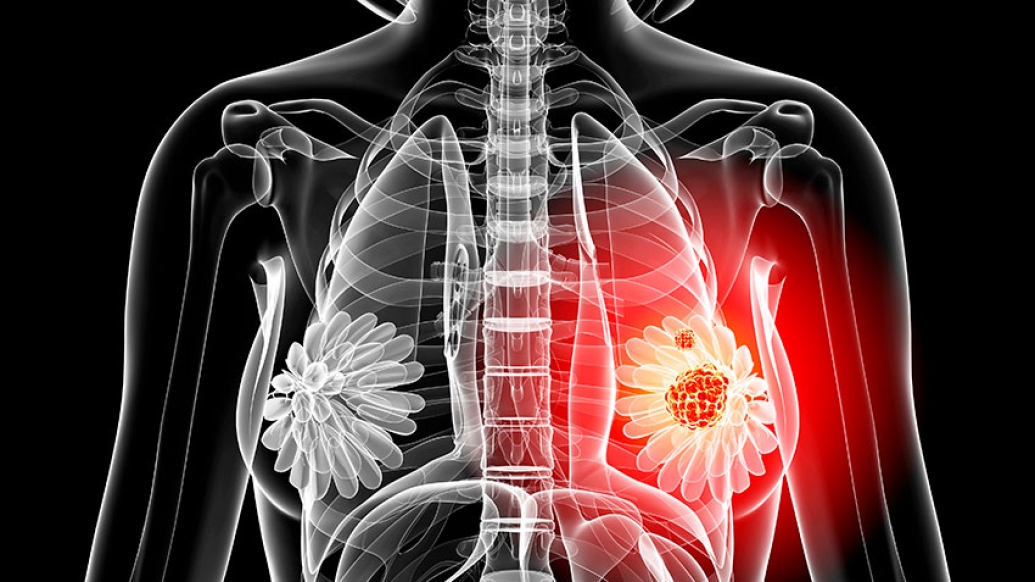From symptoms and treatment to prevention and tips, here’s what one expert says you need to know about the serious breast infection.
8:00 AM
Author |

This article was part of a short, month long Michigan Medicine Health blog series called #MommyMonday. From moms and dads to anyone who cares for an infant, check out other posts from this series like how to properly store breast milk and formula, common breastfeeding positions to improve latching, and what one patient's personal breastfeeding experience taught her.
Being a new mom comes with a multitude of worries, including ones about breastfeeding or getting your baby to successfully latch.
In an effort to keep infection off your list, Carrie Pawlowski, RN, a lactation consultant at Michigan Medicine, shares tips and tricks for keeping yourself mastitis free and what to do if you think you have it.
LISTEN UP: Add the new Michigan Medicine News Break to your Alexa-enabled device, or subscribe to our daily updates on iTunes, Google Play andStitcher.
What is mastitis and how do I know if I have it?
Pawlowski: Mastitis is an inflammation of the breast tissue that can cause pain and is commonly found in new, nursing moms. You may notice redness and swelling on the infected breast as well as flu-like symptoms, such as chills and fevers. It's common for women to attribute these signs to being rundown and tired, but don't; it's important to alert your doctor right away if you're feeling any of them.
What are the risk factors of mastitis?
Pawlowski: Mastitis is likely to occur when you have a blocked milk duct or bacteria has entered the breast through skin breakage. Infrequent feedings, missed feedings or sudden weaning can be a major risk factor since unrelieved engorgement, meaning the breasts are overfilled with milk, can block ducts. Poor latching at the breast or an ineffective suck from your little one can also cut or damage the nipple, which can potentially lead to an infection. Air-drying nipples after each breastfeeding session can help prevent irritation and cracking.
While most cases of mastitis occur during the first six weeks after delivery, some can happen at any time, so it's important to be proactive in prevention.Carrie Pawlowski, RN
Can I breastfeed while I have mastitis?
Pawlowski: Yes! Not only is it safe to breastfeed your baby during recovery, but it is actually very important to remove the milk from the breast to avoid engorgement, which can slow the recovery time. I advise moms to breastfeed their baby frequently in order to keep their breasts empty, and if their infant is not able to latch, I recommend using a breast pump for 15 to 20 minutes every two to three hours. You should begin by breastfeeding or pumping the affected breast first, but if it is too painful, start on the other. To help drain the blockage, you can massage the breast at the blocked area and move it towards the nipple.
When you're ready to wean your baby from breastfeeding, it's best to begin the process gradually. Not only does this help your baby adjust to a new eating pattern, but it also prevents the breasts from becoming too full.
WATCH: How often should you feed your newborn?
Besides keeping the breast empty, how else can I aid in the recovery process for mastitis?
Pawlowski: Not only is this advice key for patients with mastitis, but it also applies for any new mom: REST! It may seem impossible, but ask friends or family to help with household tasks so that you can concentrate on caring for your little one and getting well. Drinking plenty of fluids and eating nutritious foods can also be helpful. If your health care provider prescribed an antibiotic, take it as directed until it is completely finished. You can also take acetaminophen or ibuprofen, according to package instructions, to relieve pains, aches and fevers.
MORE FROM MICHIGAN: Sign up for our weekly newsletter
Before a feeding, try applying a warm compress to the affected breast for five minutes to help milk flow more easily. This can help to speed up the healing process and relieve any discomfort. Applying a cold pack to that area after can also help reduce pain and swelling.
What other important tips and tricks in either prevention or treatment should I know?
Pawlowski: Avoid tight bras or ones with underwire, constrictive clothing, body-hugging straps from backpacks or diaper bags, and sleeping on your stomach, as all of these can restrict milk flow and increase your risk of forming a blocked milk duct.
I think the most important piece of advice I can offer is to empty your breasts frequently. If you have cracked or bleeding nipples, make sure to see a lactation consultant. Alternating which breast you use for each feeding can also help prevent cracking or bleeding, and making sure the baby has latched appropriately. The baby should latch to the areola, past the nipple.
While most cases of mastitis occur early on, the infection can happen at any time, so it's crucial to be proactive in prevention. If you are diagnosed with an infection and you're not seeing an improvement within 24 hours after starting an antibiotic, contact your health care provider right away.
For general breastfeeding questions, please call the Lactation Help Line at (844) 200-8894. You will be asked to leave a message and a lactation consultant will return your call within 24 hours.

Explore a variety of healthcare news & stories by visiting the Health Lab home page for more articles.

Department of Communication at Michigan Medicine
Want top health & research news weekly? Sign up for Health Lab’s newsletters today!





